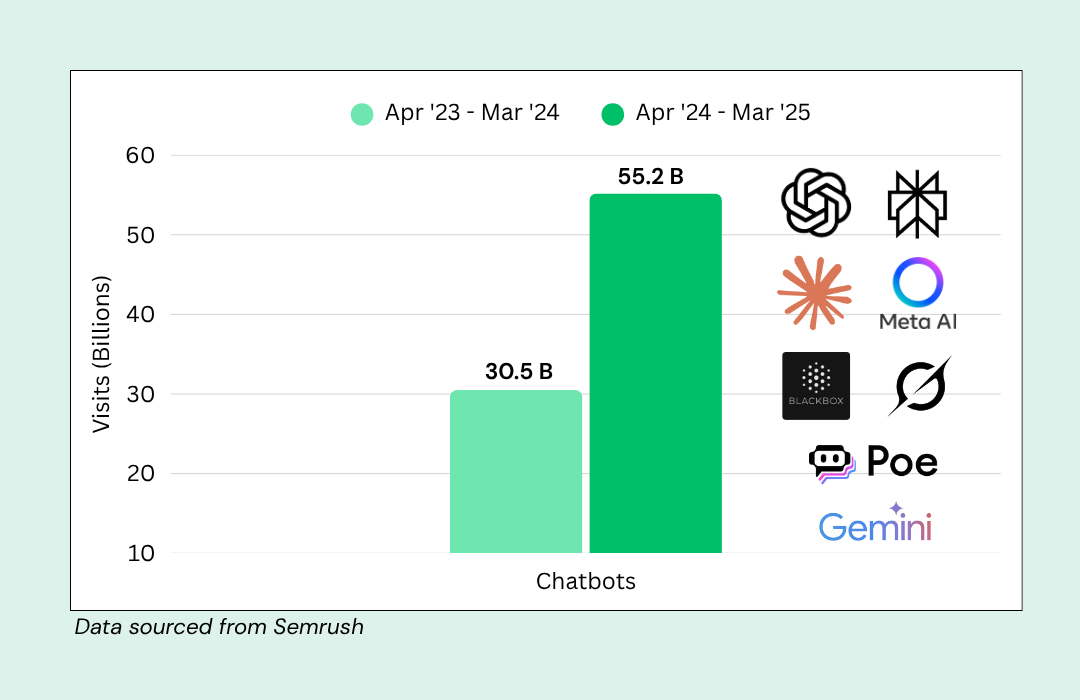Building an outbound sales strategy can be challenging. The best place to start? Your ideal customer profile (ICP).
Define exactly who you’re selling to, and you’ve got a solid foundation for growth. And that’s just what the ICP does.
Keep reading for an in-depth guide on creating your ideal customer profile, including an ideal customer profile template, how to identify your ideal customer, and a simple three-step process for creating an ideal customer profile.
What is an ideal customer profile (ICP)?
An ideal customer profile, or ICP, is an overview of the type of company that’s most likely to buy your products and services, become long-term users, and recommend you to others.
The ideal customer profile includes a description of your ICP, their demographics, objective, challenges, and behaviors or traits that indicate they’re a good fit.
Ideal customer profile example:

This template gives you an idea of the information you might include.
But there’s no one way to create it, because your ICP reflects your business and your best customers.
Note: This tool isn’t just for your sales team!
- It’s useful for the product team for evaluating the features and add-ons customers are likely to want and need
- It can help customer success anticipate and address customer issues
- And it can help marketing develop messages that are on point.
Related: How I Closed 50% More By Systematizing My Follow-Up
Why is a customer profile important?
Without an ideal customer profile, you could end up targeting accounts that aren’t likely to close. Your reps will to waste time chasing leads who are never going to buy. And that’s money down the drain.
An ideal customer profile helps you quickly qualify (or disqualify) a prospect. It also makes it easier to prioritize your time.
For example, if a new prospect is an exact match to your ICP, you can confidently invest time and effort selling to them. Companies that aren’t an exact fit may still be worth selling to, but you’ll know in advance that the sales cycle will be longer and the chances of a closed-won are lower.
Ideal customer profile vs buyer persona
Don’t confuse ICPs and buyer personas. As similar as they are, each has a different application.
The ideal customer profile helps you identify companies that you should be talking to. It gives you a high-level picture of the types of companies that get the most value from your product, including specific details that indicate they’re a good fit.
The buyer persona is useful when trying to connect with those companies. It’s a detailed description of the person you should be selling to, complete with a (fictional) name, photo, job title, likes and dislikes, and most importantly, the pain points and challenges they face on a daily basis.
Generally speaking, if you’re new to market, it’s better to start with an ideal customer profile and then develop your buyer personas once you get to know them better.
Getting started: Who is your ideal customer?
An ideal customer has seven traits:
- Ready to buy your product – they have already identified a need.
- Keen to buy your product – there are clear elements of value you can deliver for them.
- Able to buy your product – they have the financial resources to make the purchase.
- Skilled – they are likely to have the in-house knowledge to make successful use of your product to its full potential (in other words, they’re good fit customers).
- Profitable – they’re doing well in their line of work so they don’t have to cut corners.
- Growing – they’re planning to expand so they have potential for upsells and renewals.
- Networked – they’re able to act as an ambassador for your product and talk it up to other potential buyers.
You may already have a few customers like this. They’re your go-to for creating an ideal customer profile.
The ideal customer profile (ICP) template
The ideal customer profile needs to answer a few basic questions:
- What type of companies are you targeting?
- What do they look like?
- How can you quickly and easily identify them?
Can include any information that answers these questions. If you’ve figured out that users of XYZ app tend to want your solution, then you need to include that information on your profile.
When designing your profile, make it easy to scan — otherwise, it won’t get used. It’s a good idea to create a card that your team can refer to when building lists or talking to prospects. That way, it can guide their assessment and conversations.
Creating an ideal customer profile
The process of creating an ideal customer profile is simple:
- Identify your best customers
- Learn more about them
- Build a profile
Let’s dive in.
Step 1. Identify your best customers
How do you define your “best” customers? That’s up to you. You likely have a north-star metric that describes a long-term, profitable customer. For example:
- Shortest sales cycle
- Lowest customer acquisition cost (CAC)
- Highest customer satisfaction
- Largest number of renewals
- Most up-sells and expansions
- Most referrals
- Cost of servicing the contract
Using whatever criteria matters to you, make a list of the customers who you consider “ideal.” Add the list to a spreadsheet. Then add metrics, qualities you like about them, and any other relevant information.
Step 2: Learn more about your best customers
Once you’ve identified your best customers, it’s time to learn more about them. Your goal is to identify the traits and qualities that define them, so you can find more companies just like them.
There are two ways to do this: customer interviews and demographics. This gives you both hard and soft data for understanding your ICP.
Soft Data: Customer Interviews
Schedule a few interviews with your best customers, so you can get insight into their decision making criteria and feelings about your product. You can ask any number of questions, but here’s a good place to start:
- Why did they buy?
- What problems were they trying to solve?
- What other options did they consider?
- What were the features they were looking for?
- Now that they’re enjoying the solution, where have they seen the most value?
- How has it changed their situation/business?
- How would you feel if you no longer had access to the solution?
- Who was the decision maker?
- What would they tell someone who was considering the solution today?
The request for an interview should be made by the person in your organization with the best line of communication to them, whether a sales rep or a member of the success team. It’s a good idea to give them some choices: a phone call, video call, or an online questionnaire.
During the interview, try to uncover the customer’s emotional response to your product and company. Ask open-ended questions and don’t be afraid to divert from your questions and let the conversation take its course.
After the interview, show your gratitude by offering something in return, such as a free service upgrade or an Amazon gift card.
Hard Data: Study their Demographics
Dig into your CRM and prospecting tools for hard data about your customers. Look at your analytics tools for website usage and behavior.
Here are a few of the characteristics you might look at:
- Industry – what do they actually do?
- Location – where are they based, and are they local, regional or national?
- Company size – how many employees do they have?
- Revenue – how much revenue are they generating?
- Funding – how are they driving growth?
- Growth trends – are they growing, stagnant, or contracting?
- Tools – what other tools and software do they use?
These are the basics — you can evaluate any criteria that makes sense for your business. For example, I once heard of a company that discovered their best customers’ founder had a crew cut. While that’s not likely to be a trait you’ll evaluate, it demonstrates the breadth of your options.
Before moving on, add this data to your spreadsheet. Create new columns for the demographics you’ve uncovered, and add as much detail as possible.
Step 3: Build a behavioral profile of your ideal customer
Now it’s time to review the data and insights you’ve pulled together. You’re looking for patterns and commonalities, so you can easily identify companies that are likely to become long-term customers.
Steps to build your ICP profile:
- Review your spreadsheet, and make sure it has all the data (hard and soft) that you’ve gathered.
- Sort your list, so similar companies are grouped together. Consider naming each segment.
- Identify common traits and characteristics and tally the frequency of them.
- Highlight the traits that appear most often and indicate a good fit.
Now, you’ve got ultra-specific traits that define your ideal customer. You only need to create a reference card for your teams like the ideal customer profile example above.
Recap: Ideal Customer Profile questions
As you can see, creating an ideal customer profile is about asking the right questions. This checklist should help you ask the right questions to determine your ideal customer.
Questions to identify WHO you should target:
- Who are the best customers to work with?
- Who places the highest value on our product?
- Who stays with the company for the longest times?
Questions to understand the USER:
- Who is the end user of the product?
- What does the typical day look like for them?
- At what points are they getting frustrated and upset, and can you stop that happening?
- What economic, political, social, regulatory and technological forces are acting on them?
- What does the future hold for them?
- Who is accountable for ensuring the purchase is successful?
Questions to determine FIT:
- What is the number one thing that increases customer satisfaction with your product or service?
- What priority or challenge is top-of-mind when people are using your product or service? Do they want to save time, cut costs, or simplify their work processes?
- What makes customers happy and sad about your product or service? What are the best and worst features?
- Do users feel your product fulfills its promise?
Questions to know how to CONNECT with your ICP:
- How do they acquire information and knowledge?
- What blogs and books do they read?
- Are they active on particular social media?
- Where might they go where you can reach them?
I have my ideal customer profile. Now what?
Once you have your ideal customer profile, put it in the hands of everyone in a customer-facing role.
For marketing and customer success, the information you’ve uncovered is vital for attracting and keeping your best customers.
For prospecting, it’s essential for list building, engagement, and quickly determining whether someone’s a good fit.
For selling, use it to understand the buyer’s pain points and the goals they are trying to achieve, so you can quickly move them through the pipeline.
Bottom line, the ideal customer profile keeps everyone on the same page and empowers them to convince prospects that you, and only you, hold the solution they’re looking for.







